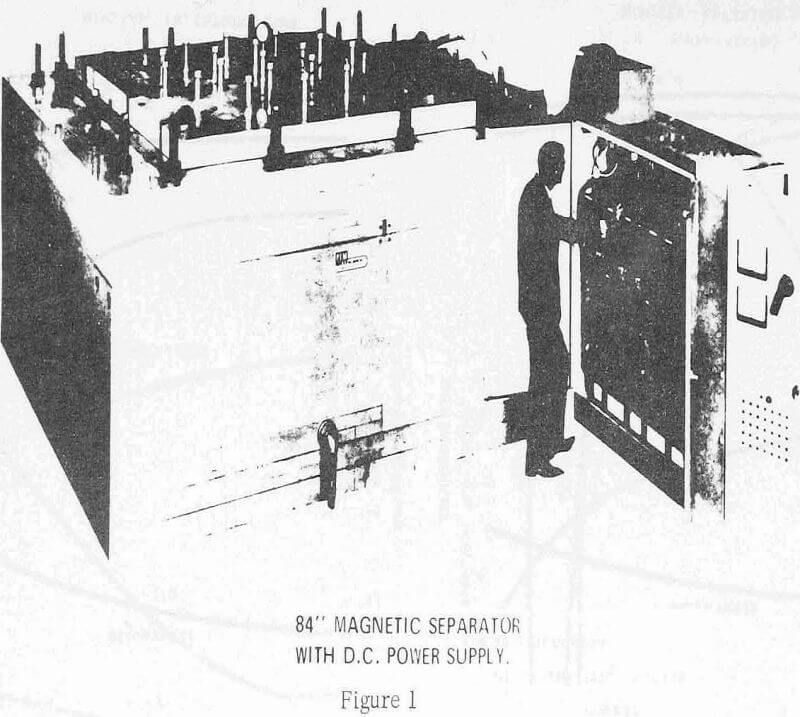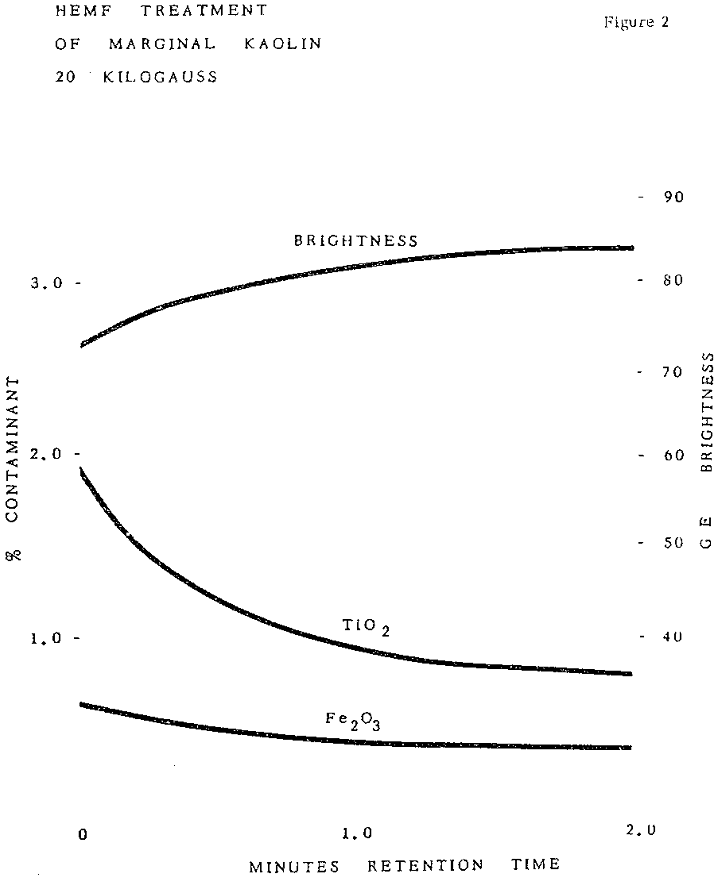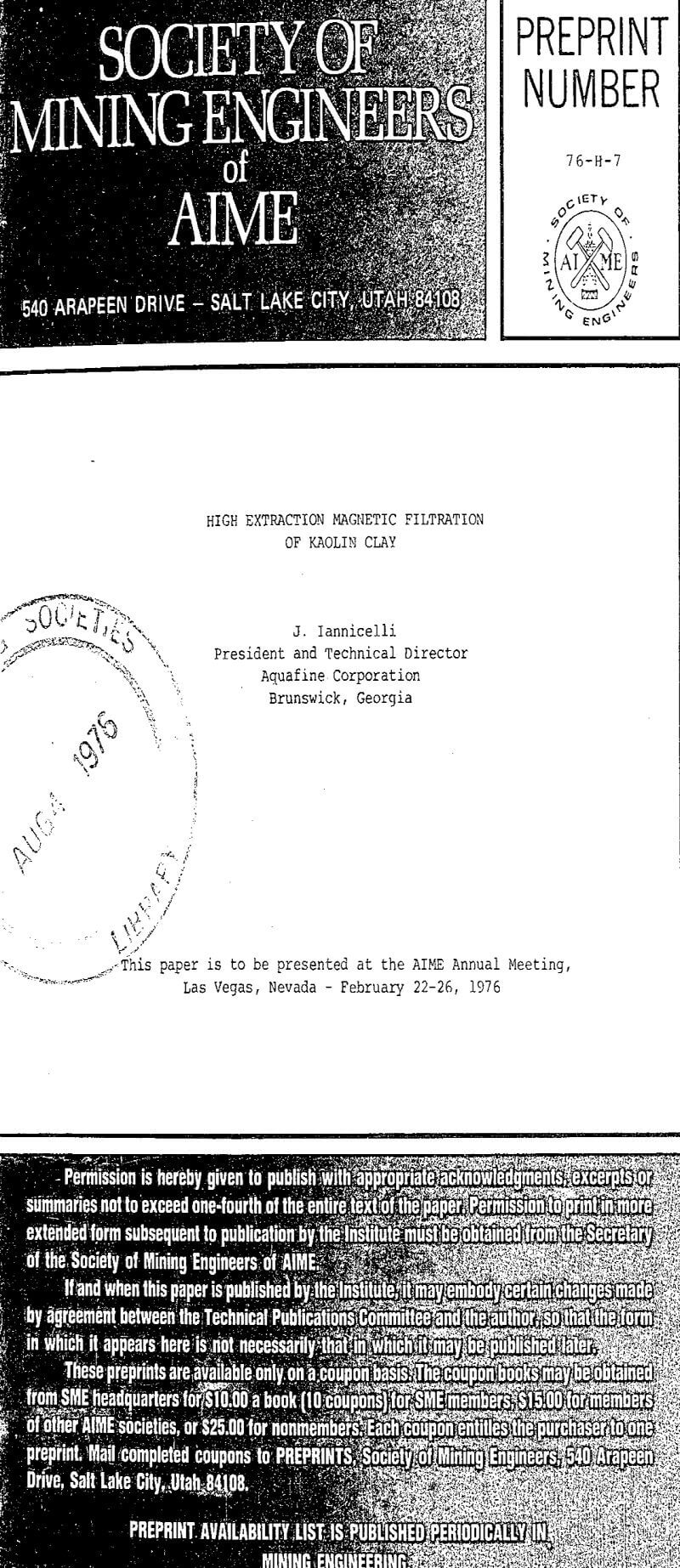Table of Contents
The kaolin development brings together for the first time four concepts that make practical large scale use of high extraction magnetic filtration (HEMF). These include retention time, extreme gradients, high intensity fields, and efficient design of large high field magnets.
Each of these elements was known and available but never refined and optimized in magnetic separation. The kaolin development optimized and fused these concepts for the first time. The result was a scientific as well as an industrial breakthrough. The cooperative contributions of each of these elements is summarized.
The Development of HEMF Equipment
To exploit the concept of retention rime, it was necessary to devise a new magnetic separator which for the first time combined high gradients of the Frantz separator with high intensity fields of the Jones separator.
For the first time, the equipment and process had reached the stage of commercial practicality. This effort led to design of prototype equipment generally resembling a Frantz Ferrofilter, but modified to generate fields of up to 20 kilogauss.
The first production prototype high extraction magnetic filter (HEMF) consisted of a hollow conductor solenoid surrounding a canister 20″ in diameter by 12″ high. The solenoid was surrounded by a heavy box-like enclosure which served as a return circuit for magnetic flux generated by the coil.
Description of HEMF Equipment
HEMF equipment in use consists of a filter canister, typically 84″ in diameter, packed with a matrix of compressed magnetic stainless steel wool. The canister is surrounded by hollow conductor copper coils which energize the entire canister volume to a field of 20 kilogauss. Coils are in turn surrounded by a boxlike enclosure of steel plate which completes the magnetic circuit of the iron bound solenoid. Slurry is pumped through the filter bed by a suitable system of manifolds.
The magnet is then deenergized and the bed flushed with high velocity water to remove magnetic contaminants. Processing of product is resumed after reenergizing the magnet. In normal operation, the duty or product cycle is 70-80%. Flow velocity can be varied from 40 inches per minute to 10 inches per minute, corresponding to a slurry retention time of 30 seconds to 120 seconds in a magnetic field. Filtration rate at 30 seconds retention corresponds to 24 gallons per square foot per minute.
Utilization in Kaolin
HEMF equipment is employed to brighten kaolin by extraction of submicron feebly magnetic contaminants. Removal of only 1-2% of discolored ferrugenous contaminants, based on original kaolin, typically brightens kaolin 2-4 General Electric Brightness units. In extreme cases, brightness improvement may be as low as 1 or as much as 30 GE units, depending on the nature of mineral contaminants in kaolin.
After one minute retention time, brightness rose from 49 to 70. Fe2O3 content decreased from 2.3 to 0.7 and TiO2 content decreased from 1.9 to 0.8. After 4 minutes retention, this kaolin achieved a remarkable brightness of 79 and Fe2O3 and TiO2 contents of 0.5 and 0.4. K2O content decreased from 0.3 to 0.18 after four minutes, indicating significant removal of mica. As a result of magnetic treatment, an utterly unusable kaolin was converted to filler brightness. Subsequent chemical leaching of this whole fraction clay resulted in an 89 brightness which would put this clay in the premium brightness range.
Magnetic separation in kaolin processing is a comparatively low cost and versatile technique. By variation of retention time, it is possible to achieve differing degrees of magnetic extraction at acceptable variations in costs. The HEMF process is not only low in operating cost, but also furnishes high yield 98-99% of kaolin product based on feed.



